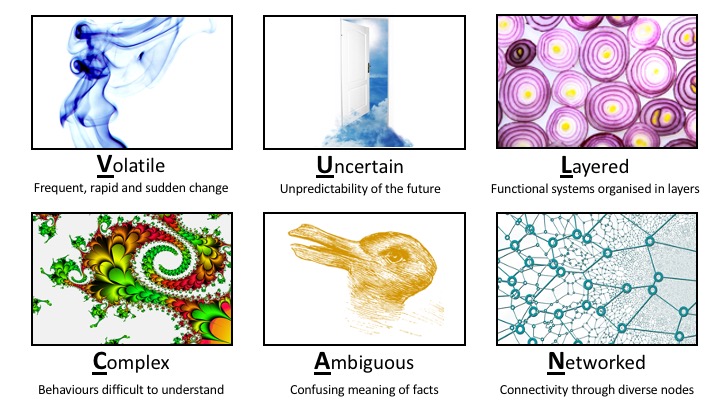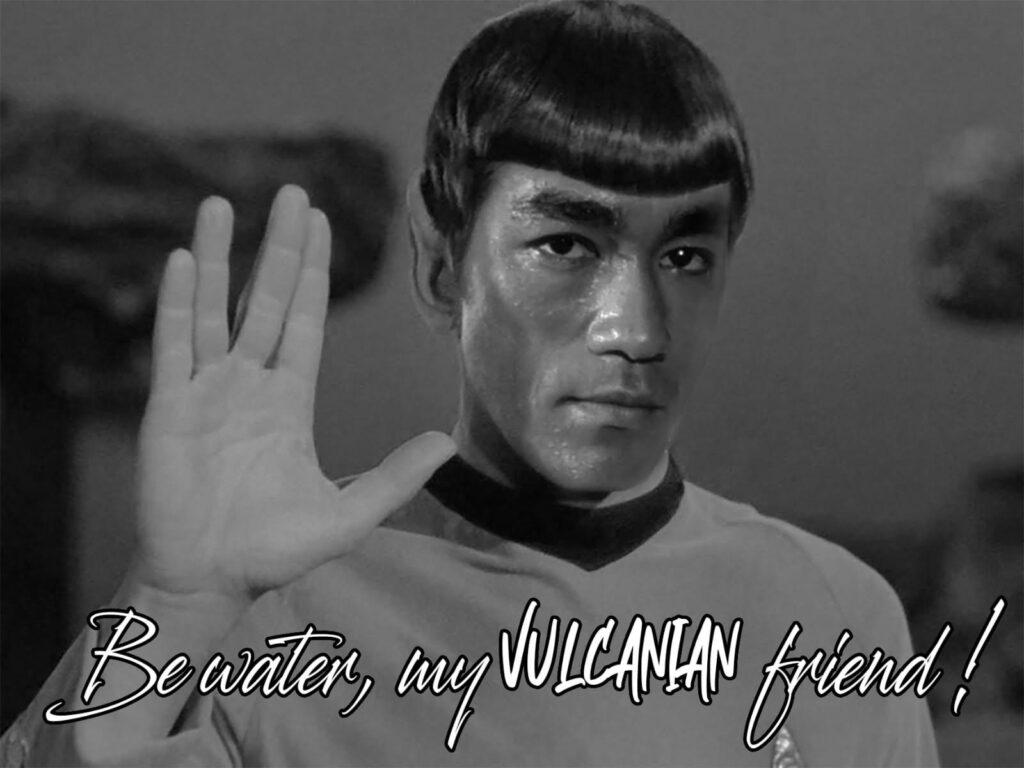The World after the Industrial Revolution 3.0: Living in a Fluid and Hyper-connected Society

Article 1 of Chapter 1: Complexity Management

“Everything Flows, Nothing Stands Still”
Heraclitus
We live in change, off change, for change. We are change.
There are changes we can control, even foster. The least. We can influence others, in the best of cases. But many are given to us, we find them. The majority. Some of these ones can be suspected, so that we can anticipate and worry about preparedness for when they occur. However, others appear suddenly and unpredictably, forcing us into a swift reaction and adaptation. Let’s focus on the latter for this series of articles. If the magnitude of the change is subtle, gradual and in incremental stages, it will not demand much of us, possibly we will adapt in a natural and gradual way, almost imperceptibly and unconsciously. Only when we look back with time perspective, we will realize the transformation experienced. However, from time to time drastic and disruptive changes occur, which even lead to a total transformation of the status quo and paradigm in which we live. We return to the starting point, to zero. We have to restart the game, or rather a new game, with new rules and players. The challenge is enormous: how to survive and navigate through a storm that we have not been able to foresee? We have no alternative but resetting and reinventing ourselves.
“It is not the strongest of the species that survives, nor the most intelligent that survives. It is the one that is most adaptable to change”
Charles Darwin
The technological and scientific advances achieved since the end of the 20th century in the field of information, digitalisation and communications (known as ICT, information and communication technologies) have drastically transformed Society and our way of living and relating. We can speak of a Revolution of Accelerated and Massive Connectivity. In the Society of the Third Industrial Revolution 3.0, everything is connected and flows faster, in greater quantity, more lightly, more intelligently and at a greater distance. Everything is at your fingertips or with a click, immediately accessible. We live the almost divine illusion of ubiquity: to be present everywhere at the same time, as observers or as virtual actors. Furthermore, without having barely had time to adapt to the new modus vivendi, we are already at the dawn of the next Revolution and facing the opening of a new era, possibly the most momentous in the History of Humankind: The Revolution of Artificial Evolutionism, the New Identity, the “Homodeism”. The “Divine Man” (the Homo Deus of Y. Harari) moving towards transhumanism and technological singularity. For the first time in Natural History, the human being defies the laws of evolution and assumes the power to modify and create new autonomous species with natural (bionic technologies and gene editing) or artificial (computing and robotics) intelligence, as well as transferring the borders of the mind and rethinking the concept of “identity”, understood as the property and privacy of thought (BCIs, brain-computer implants, neurotechnology). But let’s put aside this future scenario that awaits us for the moment and let’s stop at the present moment.
Trying to describe the characteristics of this new current environment, the acronym VUCA has been adopted, stemming from the initials of the terms Volatile, Uncertain, Complex and Ambiguous. Originally created in the military field after the end of the Cold War, its application has been very pertinently extended to the strategic analysis of the behaviour of individuals, social groups and business organisations in the contemporary world. In order to make the description more precise, I propose to add two new attributes to these four elements: Layered and Networked. Conveniently mixing the six elements, the acronym would evolve to VULCAN:
- Volatile: frequent, rapid and sudden change.
- Instability, inconstancy
- Transience, evanescence
- Intangibility, evasiveness
- Uncertain: Unpredictability of the future.
- Little clarity about the evolution of the present
- Surprise
- Planning difficulty
- Layered: Functional systems organized in layers.
- Capacity and complexity is modularly built, grown and repaired
- Each system is whole and part: the well-being and good work of the whole depends on that of the parts (“everyone depends on everyone else”)
- Natural hierarchy (e.g. ecosystems, multicellular organisms)
- Complex: Difficult to understand.
- Multiplicity of variables, forces and decision factors
- Unobvious and confusing cause-effect relationships
- Elusive, chaotic, seemingly random behaviour
- Ambiguous: Little clarity about the meaning of the facts.
- Multiple interpretations. Prismatic distortion of reality.
- Confusion, misunderstandings and misrepresentations.
- Complicated explanations
- Networked: Connectivity of diverse elements in a horizontal network.
- Neural nature: feedback nodes
- Self-managed: organisation, learning, growth
- Agility and adaptability

Attribution: Images are freely-usable on FreeImages (by Brian Lary), Freepik (by Bedneyimages), Unplash (by Wilhelm Gunkel) and Pixabay (by Geralt) websites
This new scenario implies the liquefaction or sublimation of the past world prior to the ICT Revolution of Connectivity to give way to a new paradigm that the philosopher Zygmunt Bauman has metaphorically called “Liquid Modernity”. The new society that has emerged in the modern VULCAN environment is a Liquid Society subject to continuous and irreversible changes. In contrast, the past world and society were “solid”, that is, sustained in tangible realities, more predictable and controllable, programmable, more stable. Standardised procedures, norms, absolute values, repetition, customs, people groups were their rules of the game and scope of action. However, this made them too reluctant to external change and internal mutability, slow of movement, prone to involution and with limited capacity for renewal. A “Dinosaur Society”.
Interestingly, this dichotomy has also been used recently to describe differences between cognitive networks with the ability to exchange, store and process information. This is how we speak of “solid brains”, those in which there is a well-defined and persistent physical structure of elements and connections (e.g. brain neuronal networks or in silico microprocessors), and “liquid brains”,in which the connections are not stable and the elements are dynamic and can even move in space (e.g. colonies of ants and termites, the immune system or some microbiomes). These latter systems are highly adaptable and nimble, can solve complex problems, exhibit learning and memory and make decisions in response to environmental conditions.
Modern Liquid Societies, or better yet “Fluid Societies”, are characterised by five essential attributes of the entities that compose them and that are specific to the physical nature of fluids, either liquid or gaseous:
- Evanescent: goods, values and resources (“assets”) can disappear without a trace. They evaporate or sublimate either never to return or to settle in “the cloud”.
- Malleable: the high rate of change and its unpredictability demand agile, fast and energetically efficient adaptation mechanisms.
- Light: assets of value can be much less heavy and more vaporous, allowing them to move quickly and massively.
- Resilient: in a situation of stress and disturbance, the systems can be strengthened after compression and exert a more impactful effect than previously exerted. Pressure is instantly transmitted without rupture.
- Evasive: systems and elements are difficult to contain and stop in their movement, are intangible in some cases. The shape of fluids is ephemeral, they do not cling to a specific space or time, rather history is an intrinsic feature of their nature.
Paraphrasing Bauman, the identities of this new liquid modernity are similar to the crust of a volcanic lava tube that hardens, melts again, and constantly changes shape, before they have time to cool down and set. From the outside they may appear stable and solid, but inside they are constantly fragile and torn by their surroundings.
At this point, let me make a couple of observations that may be of interest. If we take as an indicator the evolution of the stock market index during periods of sudden crisis, such as the one caused by the COVID-19 pandemic in early 2020 (see figure), it is noticed the greater vulnerability of solid organisations (included in the Dow Jones Industrial, DJI) due to the distrust of investors and their lower capacity to react compared to those ones which are more liquid and based on modern innovation, technology and knowledge (included in the NASDAQ, despite some of the most capitalised companies are also listed on the DJI). Time will tell if it is a sustained effect or a speculative bubble. In 2018, General Electric (GE) was removed from the Dow Jones index after 111 years trading on the index and having been the company with the highest stock market value in the world and a symbol of US industrial power during the 20th century (“forewarned is forearmed”).

In summary, Are there guidelines to avoid leaving the success of such a process of change to the whim of randomness, luck or chance, in order to not only survive, but even emerge stronger?
In the following articles Complexity Management We will intend to:
- state and specify these challenges (there is no wrong answer but a wrong question),
- identify prior scientific knowledge developed to understand natural systems with analogous characteristics and, eventually,
- propose tools for the management of organisational systems in this new environment.
I invite you to embark on this journey that we will do together.
For the moment, I leave you with the Taoist advice of our friend Mr. Bruce Spock-Lee: “Be Water, My VULCANian Friend”. You don’t have to use force to fight force, it is better to be like water and let the blow flow over your opponent.

“Don’t get set into one form, adapt it and build your own, and let it grow, be like water. Empty your mind, be formless, shapeless — like water. Now you put water in a cup, it becomes the cup; You put water into a bottle it becomes the bottle; You put it in a teapot it becomes the teapot. Now water can flow, or it can crash. Be water, my friend”.
Bruce Lee
UPCOMING ARTICLES OF CHAPTER 1: COMPLEXITY MANAGEMENT
“The Grand VULCANIAN Challenge: Planning the Uncertainty and Sustaining the Change”
“Understanding the Simplicity of Complexity: the Chaos Theory”
